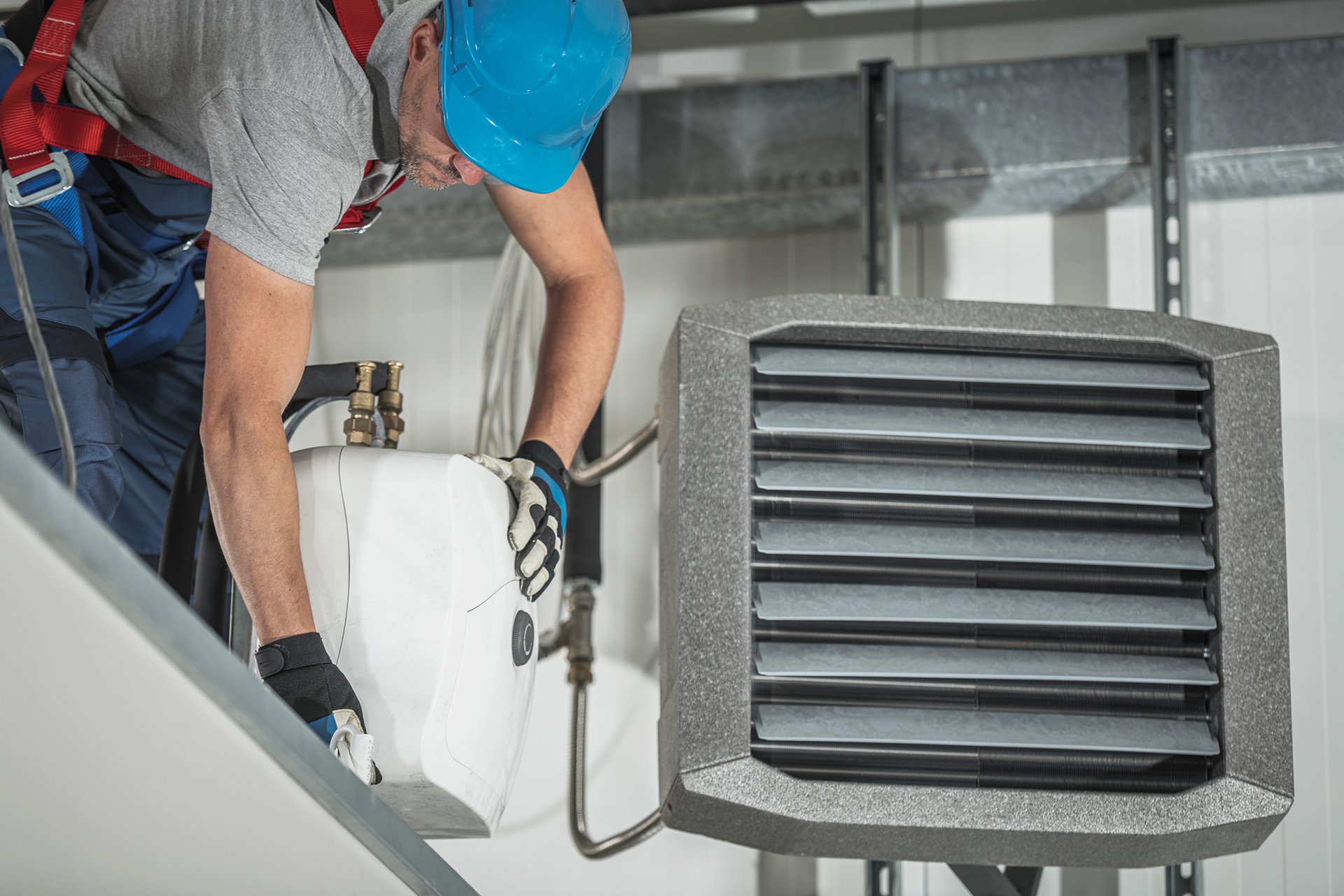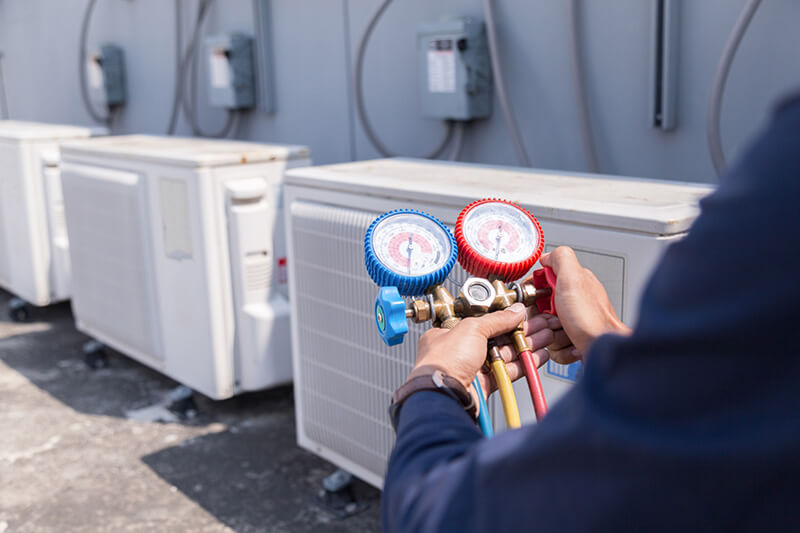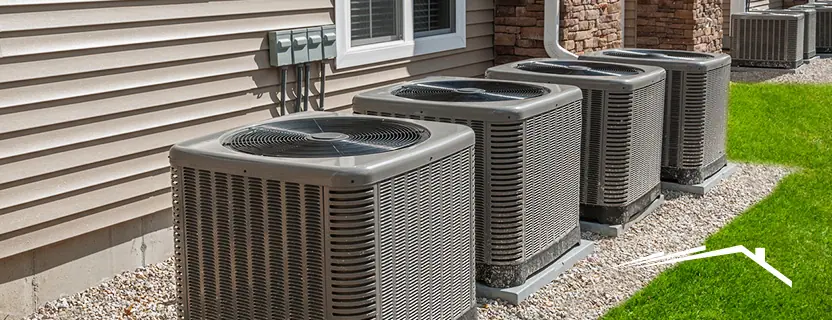How Property Owners are Switching to ductless mini splits for Energy Savings
How Property Owners are Switching to ductless mini splits for Energy Savings
Blog Article
Exactly How a Warmth Pump and Heater Collaborate to Enhance Your Home's Heating Efficiency
Comprehending just how a heatpump and heating system collaborate is vital for property owners seeking reliable heating remedies. Each system has its staminas, providing a well balanced technique to home comfort. The heatpump masters modest temperatures, while the furnace provides fast warmth throughout severe cold. This harmony not just lowers energy prices yet additionally improves the life expectancy of both devices. What variables influence this collaboration, and exactly how can homeowners optimize their advantages?
Comprehending Warm Pumps: Just How They Work
Although lots of people might be unknown with their internal workings, warmth pumps play an important role in contemporary heating systems. These devices operate by moving heat from one location to another, utilizing the concepts of thermodynamics. In chillier months, a warm pump essences warm from the outdoors air, ground, or water, and transfers it inside to heat the space. Alternatively, during warmer months, it can turn around the procedure, serving as an ac system by eliminating warm from inside to the outside.Heat pumps contain an evaporator, compressor, condenser, and expansion valve. The refrigerant within the system absorbs heat as it vaporizes at low temperature levels and stress. The compressor after that enhances the pressure and temperature level of the refrigerant, permitting it to release warm as it condenses. This efficient process can considerably lower energy consumption compared to standard home heating techniques, making heatpump a lasting option for climate control in homes.
The Role of Furnaces in Home Heating
Furnaces play a vital function in home heating by offering a trustworthy resource of warmth throughout the cooler months. They operate by generating heat through combustion or electrical resistance, dispersing it throughout the home using air ducts or glowing systems. The performance of a heating system is commonly determined by its Yearly Fuel Utilization Efficiency (AFUE) ranking, which suggests how effectively the device converts gas right into heat.Furnaces can utilize numerous energy sources, consisting of gas, lp, electricity, or oil, allowing homeowners to pick one of the most appropriate option for their demands. Unlike heatpump, which might struggle in severe chilly, furnaces keep regular efficiency, making certain that interior temperature levels stay comfy despite outdoor problems. Furthermore, modern-day heaters commonly come equipped with sophisticated technology, such as variable-speed blowers and clever thermostats, improving their performance and responsiveness. This flexibility makes heaters an important part in all-encompassing home heating methods.

Benefits of Using Both Equipments With Each Other
Integrating the staminas of both furnaces and warmth pumps can bring about a much more efficient and efficient home heating solution. Making use of both systems enables property owners to take advantage of the heatpump's energy efficiency throughout milder temperatures while depending on the heater for more extreme cold conditions. This dual method can significantly reduce power expenses, as heat pumps eat less electricity than typical heating approaches when temperature levels are moderate.Additionally, using both systems with each other can enhance convenience levels in the home. Warmth pumps can offer regular, even heating, while heating systems can quickly elevate ambient temperatures when required. Moreover, the integration of both systems can expand the lifespan of tools by decreasing damage on each unit, as they share the work. Inevitably, property owners can appreciate a balanced, economical heating service that readjusts seamlessly to varying weather conditions, making certain a warm and inviting home throughout the wintertime months.
How Warm Pumps and Furnaces Enhance Each Various Other
They develop a complementary heating system that makes best use of efficiency and comfort when property owners integrate warm pumps and heating systems. Warmth pumps run by transferring warm from the outdoors air or ground, making them very efficient in moderate climates. They stand out during milder temperature levels, supplying cost-efficient home heating. Conversely, heaters create warmth with burning or electric resistance, delivering strong, immediate heat throughout severe chilly conditions.The combination of these two systems permits vibrant changes based upon temperature fluctuations. During warmer months or milder winter days, the heatpump can take the lead, preserving power and lowering prices. As temperature levels decrease, the furnace can seamlessly involve, making certain constant warmth throughout the home. This synergy not just enhances energy usage however likewise enhances the life-span of both systems, as each system operates within its perfect efficiency array. With each other, they produce a balanced environment that adjusts to varying climate demands.
Optimizing Efficiency: Tips for Homeowners
Homeowners can improve their heating performance via several functional techniques. Establishing a routine maintenance schedule, integrating clever thermostat modern technology, and implementing reliable insulation and sealing remedies are vital steps. These actions not just improve convenience but additionally minimize power other costs.
Normal Upkeep Arrange
To assure optimal heating effectiveness, developing a routine upkeep schedule is vital for any kind of home. House owners need to prioritize regular evaluations of both heatpump and heaters to establish peak efficiency. This includes altering air filters every one to 3 months, as blocked filters can substantially minimize efficiency. Furthermore, scheduling professional maintenance a minimum of yearly allows professionals to recognize and deal with possible concerns prior to they rise. House owners should also clean up the heat pump's exterior device to prevent debris accumulation that can hinder air movement. By sticking to a normal maintenance routine, house owners not just boost their furnace' performance however likewise extend their lifespan, causing better comfort and decreased power prices throughout the cooler months.
Smart Thermostat Combination
Incorporating a clever thermostat right into a home heater can substantially enhance energy efficiency, especially as it permits for exact control over temperature level settings. These gadgets can find out the house owner's schedule and preferences, automatically readjusting the temperature to optimize convenience while reducing power use. They can reduce heating during times when the home is empty, decreasing unnecessary usage. Numerous clever thermostats likewise give real-time energy usage information, enabling property owners to make informed choices about their home heating practices. Additionally, remote accessibility through smart device apps enables customers to change setups from anywhere, making sure the home is warm upon return. On the whole, smart thermostat combination not just enhances convenience but significantly adds to energy cost savings and performance.
Insulation and Sealing Solutions
Smart thermostats play an essential duty in energy effectiveness, yet their effectiveness can be considerably enhanced by appropriate insulation and securing solutions. Home owners should focus on protecting walls, attic rooms, and floorings to minimize warmth loss. Top quality insulation products, such as spray foam or fiberglass, can significantly improve thermal resistance. Additionally, sealing spaces around air ducts, home windows, and doors stops cold air seepage and warmth retreat. Weatherstripping and caulking work techniques for addressing these leakages - ductless mini splits. Routine inspections for air leaks, along with using blower door tests, can assist recognize problem areas. By spending in insulation and securing, homeowners can optimize the performance of their heater, ultimately leading to decreased power consumption and reduced energy expenses
Usual Misconceptions Regarding Warmth Pumps and Furnaces
What false impressions surround warmth pumps and furnaces? Numerous individuals incorrectly think that heatpump are inefficient in colder climates. Actually, contemporary heatpump are developed to operate efficiently even in reduced temperature levels, giving dependable home heating throughout winter months. Another typical myth is that heating systems are always a lot more reliable than heatpump. However, this depends upon the details power sources and effectiveness rankings of the systems in question. Some may additionally believe that using both systems concurrently is unneeded, yet as a matter of fact, this mix can optimize home heating effectiveness, specifically throughout severe weather. Additionally, individuals typically presume that heatpump need constant maintenance, when truthfully, they have similar upkeep requires to typical heating unit. By disproving these myths, house owners can Learn More make more enlightened decisions concerning their heating alternatives, eventually leading to boosted comfort and energy efficiency in their homes.
Upkeep Factors To Consider for Combined Solutions

Frequently Asked Questions
Can Warmth Pumps Work Properly in Very Cold Climates?
Warmth pumps can have a hard time in incredibly cold environments due to reduced efficiency and warmth removal restrictions. Improvements in technology have actually led to versions created for much better performance in such problems, improving their practicality in severe atmospheres.
How Much Time Do Warmth Pumps and Furnaces Commonly Last?
Heatpump typically last 15 to twenty years, while heaters have a lifespan of 15 to three decades. Normal maintenance can expand their longevity, guaranteeing reliable procedure and decreasing the requirement for early substitutes.

What Is the Ordinary Expense of Setting Up Both Solutions?
The ordinary price of mounting both a heatpump and a furnace typically varies in between $5,000 to $10,000 - heat pump service. Elements affecting this expense include system size, installment complexity, and local labor rates
Are There Tax Obligation Incentives for Using Energy-Efficient Heating Equipments?
Many house owners ask about tax obligation rewards for energy-efficient furnace. Different government and state programs usually provide debts or rebates, urging the fostering of sustainable modern technologies to reduce energy intake and promote environmental obligation.
How Do I Pick the Right Size Heatpump and Heating System?
Picking the appropriate dimension warmth pump and heater involves determining the home's square video footage, thinking about insulation high quality, and assessing regional climate. Consulting a specialist can ensure perfect system efficiency and energy effectiveness based on particular requirements. furnace replacement. Understanding exactly how a heat pump and heater work with each other is essential for homeowners looking for effective home heating remedies. In chillier months, a warmth pump extracts warm from the outdoors air, ground, or water, and transfers it inside your home to heat the living area. When homeowners integrate warmth pumps and heating systems, they create a complementary home heating system that makes best use of effectiveness and comfort. Heat pumps operate by transferring heat from the outdoors air or ground, making them highly efficient in moderate climates. Warmth pumps can battle in exceptionally cold climates due to minimized efficiency and heat extraction restrictions
Report this page